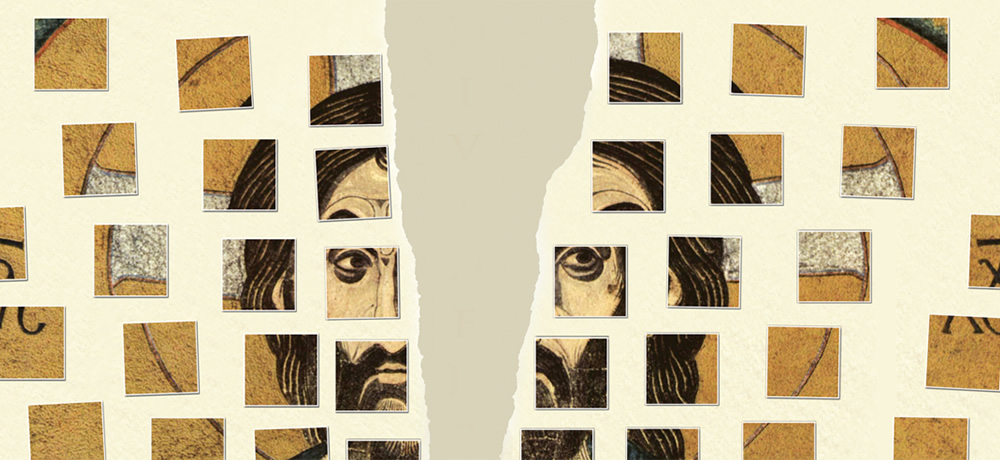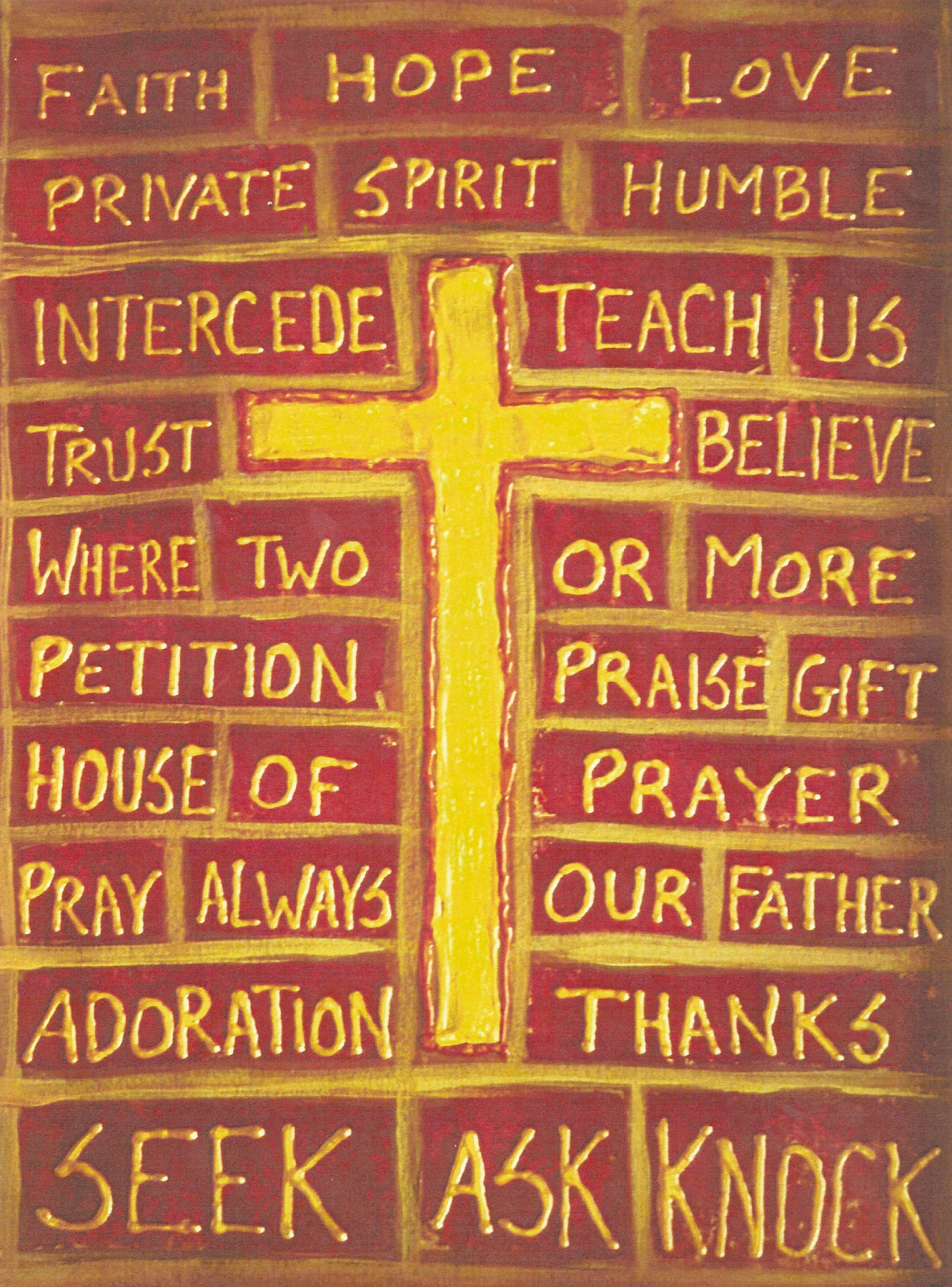Unity in Diversity

used by permission of Church Together in Britain and Ireland
23/7/17 9:40 pm
Unity seems a scarce commodity these days. Whether the topic is politics, matters of faith or how to handle the influx of refugees, the discord can lead to outright feuding. Just check the comment sections of online news reports which are teeming with vitriol if you’re foolish enough to look. It’s easy to talk to someone we agree with, but much harder when we differ. How can we have unity when we don’t see eye to eye? As Rodney King, the taxi driver who was beaten by police in 1991, famously said, “Why can’t we all just get along?”
Of course, it’s not a new problem. Anyone who has lived side by side with others knows unity is tricky. The Philippians of the first century were also no strangers to conflict. As Jesus followers, their lives reflected a new way of being human, both individually and in community, which contrasted with and confounded the larger Pagan world. Remaining true to this calling meant being faced with a dilemma. Should they stifle their identity and stay safe or live openly and risk maltreatment and even persecution? For many in our modern world, this is an all too-familiar dilemma, especially in these days of divisive political views.
Despite all the differences that could divide them, Paul the Apostle urged the Philippians to have a “gospel worthy unity.” “Whatever happens, conduct yourselves in a manner worthy of the gospel of Christ…Stand firm, united in one spirit and mind as you struggle together to remain faithful to the gospel.” (1:27)
Like a coach who can’t stop cheering the team on, Paul repeats himself with other words:
Have the same mind!
Stand with a single spirit!
Be united in intention!
Think along the same lines!
And in case they still didn’t understand, later he adds, “Imitate me!” His life had taken the shape of the Master Story of the cross, and the Philippians were to look at it as an example. Or they could model themselves after the lives of friends Timothy and Epaphroditus.
A Call That Compels
 This call to unity still compels all these years later. We 21st century disciples have hearts restless for God, and Paul tells us we have a citizenship in heaven, not just an earthly one. “We were made for another world,” says C.S. Lewis. We long to live as one, united under this banner, but all too quickly we trip up as our communities become marked by disunity, failure, and strife.
This call to unity still compels all these years later. We 21st century disciples have hearts restless for God, and Paul tells us we have a citizenship in heaven, not just an earthly one. “We were made for another world,” says C.S. Lewis. We long to live as one, united under this banner, but all too quickly we trip up as our communities become marked by disunity, failure, and strife.
How can we be a people who truly live the gospel we believe in, where everyone and everything belongs? Can we really stand as one with a counter-cultural voice? What does it mean to partner with the Spirit and follow Christ in our community life, while honouring the diversity among us? What is our organizing center?
False Unity
Unity seems easy when groups first begin. The psychiatrist Scott Peck called it “pseudo-community,” marked by a kind of surface togetherness. We’ve all experienced it. Though we have high ideals, if we’re honest, we might see our hidden assumption that unity means sameness. Things look OK to the casual eye as long as everyone is pleasant with each other and avoids conflict. This can work for the short term but it doesn’t take long to experience each others’ sharp edges. Individuality, intimacy, and honesty are stifled.
Such false unity occurs when inclusion is the highest value, and many a Christ-community has fallen prey to it. A friendly feeling may be in the air but the vision of the Gospel is watered down when we just want everyone to belong. The deepest values people felt called to in the first place become weakened and sometimes even forgotten altogether, and everything devolves into a “holy muddle”. In the book of Revelation, this type of community was called lukewarm, the farthest thing from the gospel worthy unity Paul envisioned.
When “unity in sameness” fails and differences are aired, things don’t get much better. Diversity always makes a stronger habitat in nature, but with people it seems almost impossible. The holy muddle can turn into a “holy huddle,” marked by chaos and struggle. The urge to make everyone the same can lead to an intensification of the vision, defining beliefs and doctrinal statements to establish who’s in or out. Dogmatism and attempts to impose unity through organization and requirements can take over as joy disappears.
Pseudo-community is marked by either of these extremes, a lukewarm togetherness on the one hand or a rampant individualism on the other. Where can people turn if the group is mired in troubles? Neither watering down or intensifying a vision provides the “gospel worthy unity” we are called to.
True Unity
Paul tells us that discipleship in Christ is the only touchstone that avoids the pitfalls of both extremes. Having Christ as the center of our unity is preferable to friendly feeling or dogma. His language is designed to produce an ordered, harmonious diversity.
This goal can sound a bit abstract, and perhaps that’s why Paul told the Philippians just to imitate him if they were confused. His request could have been ego-driven, but what he was really saying was, “Insofar as I am like Christ, imitate me.” They were to look at the pattern of his life, or his friends Timothy and Epaphroditus, lives which were modelled after Christ’s life. Those lives had patterns which ran counter to the Empire; to all the powers that sought to take the place of the gospel. In other words, Paul asks us to keep our eyes on those who model the Master Story.
But doesn’t imitation beg a kind of mindless repetition, a community of clones? It’s helpful here to distinguish between two kinds of repetition. The first is a static, negative “repetition of the same.” For example, when introducing a concept such as negative space to students, an art teacher might explain it, provide examples and then encourage them to imitate it in their own way. Those who just copy the examples might be making a start, but they won’t really get it until they create their own unique rendition. This kind of identical repetition is boring, tedious, and mindless. Collective settings thrive on it. Needless to say, it’s not what Paul meant.
Complex Repetition
But true repetition, by contrast, is not identical at all. Author David Congdon described it as “complex repetition," an explosion of creativity which results in anything but identical copies. It follows a pattern or model, but the result is elaborate and unique.
 The Fibonacci numbering system might be a good example. It’s a predictable sequence of numbers mathematicians have discovered which appear with unending variation in all kinds of places. The famous Fibonacci spiral appears in nature from sunflowers to hurricanes to galaxies. Once you become aware of it, you see it everywhere. Perhaps the poet Gerard Manley Hopkins was thinking of the prolific repetitions of the Fibonacci spiral in nature when he wrote, “Christ plays in 10,000 places.”
The Fibonacci numbering system might be a good example. It’s a predictable sequence of numbers mathematicians have discovered which appear with unending variation in all kinds of places. The famous Fibonacci spiral appears in nature from sunflowers to hurricanes to galaxies. Once you become aware of it, you see it everywhere. Perhaps the poet Gerard Manley Hopkins was thinking of the prolific repetitions of the Fibonacci spiral in nature when he wrote, “Christ plays in 10,000 places.”
Another powerful though paradoxical example of complex repetition is the Trinity. While the word Trinity is not found in the New Testament (it was coined in the 3rd century), the idea of Father, Son, and Holy Spirit was present in Jesus’ life and teachings from the very beginning. Whatever our views, the Trinity is an expression of the nature of God and an apt metaphor. If we take a close look, we see a unity in each of the expressions of God, but also a diversity as each reveals God in a unique way. Each is a creative, complex repetition which makes God present to us in ways we can never anticipate.
The image of the Trinity perfectly captures the idea of unity in diversity — three different expressions of God which paradoxically are also expressions of one God.
Paul’s encouragement to imitate him just as he’s imitating Christ could have been restated with the modern mandate, “Become a complex repetition of Christ.” The pattern of Christ’s life, death and resurrection, and that pattern of living a self-giving life can be repeated endlessly, each life a unique expression.
Two Examples
In our neighbourhood, some folks from several house churches meet every few months for mutual support and prayer. Each community is distinct with its own unique flavour. While one is a community largely of former refugees, another serves the local neighborhood with block parties and sports activities. Another runs a creative ministry for children while yet another sings and visits with seniors. Ours loves to study together in a school for spiritual formation.
It’s like each group is a pizza shop, offering pizza like all the others but with one-of-a-kind toppings. In a recent meeting, we shared our covenants with each other and realized that while each one used different words, there was a unity under Christ. All is done under the banner of Christ.
Needless to say, finding unity is not easy or a sure thing. Our own community of Watershed in Winnipeg’s inner city has had to find our own way from disunity toward unity over the years. How could we be faithful to our calling without compromise while still being inviting and inclusive of others? Articulating our covenant together in light of God’s faithfulness has helped immensely. In retrospect, the group’s vision sometimes got watered down when we tried to include everyone; other times we tried to intensify our commitment to the vision but unintentionally ended up excluding some.
A key piece of the puzzle fell into place when we realized there could be two ways of participating. People at Watershed are free to choose to be either friends participating at their own pace, or core covenant members who feel called to make a more intentional commitment to God and each other. God, the ultimate Covenant Partner, has been faithful in keeping us together and helping us find a joyful unity amidst our diversity.
Perhaps becoming complex repetitions of Christ, united in one calling, is our way through this divisive time in our world. We’re not to become mindless clones of what we see around us. Rather, we are invited to look at what unites us, stretch our wings, and become who we were created to be within the pattern of Christ.
Resources
We are indebted to the author David W. Congdon, who described “complex repetition” in his book The God Who Saves.
Read more about Scott Peck’s “Four Stages of Community” in this short article. He says that any group of strangers coming together to create a community goes through four distinct and predictable phases. http://atlc.org/members/resources/four_stages_community.html
To read more about the Trinity, see Richard Rohr’s excellent book, Divine Dance: The Trinity and Your Transformation.
To view Watershed’s covenant, “What is Covenant Community at Watershed?” go to http://www.watershedonline.ca/articles/2015/watershedcovenant1.pdf
The prose poem called “Birds of a Feather” by Paul Patterson is a short meditation on unity in diversity. http://www.watershedonline.ca/articles/2012/birdsofafeather.shtml
Question of the Week
How do you think we can be both "the same" (unified) and diverse? Do you have any examples?